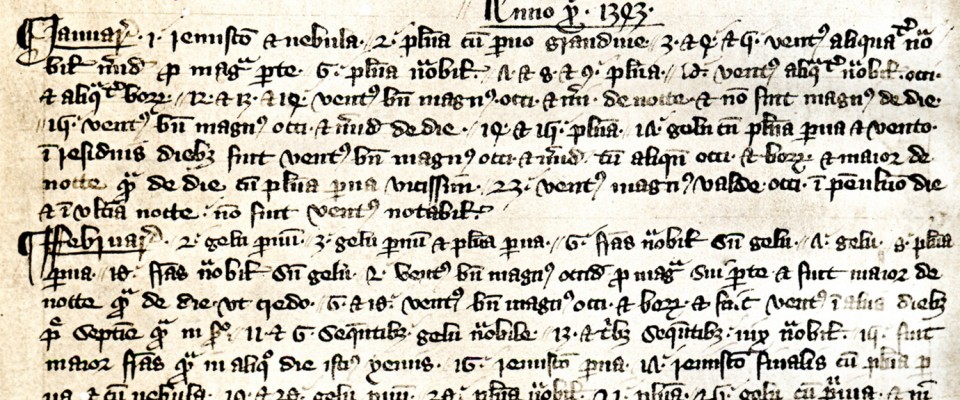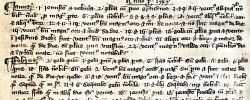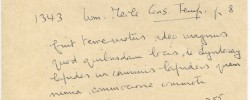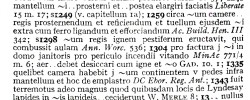Some sources for the DMLBS fall into established categories, such as history, theology, scientific treatises, or administrative records, others are practically unique, such as this this weather diary, the earliest known weather journal we have. William Merle was rector of Driby in Lincolnshire between 1331 and c.1347, and for much of this time he had leave to study in Oxford. From January 1337 to January 1344 he recorded the weather month by month in Lincolnshire and Oxford (wherever he happened to be at the time).
The Consideraciones temperiei pro septem annis Christi (Observations of the weather for seven years AD) has given us evidence of many words for meteorological and similar phenomena. This entry records an earthquake in Lincolnshire on 28 March 1343 strong enough to topple stone chimneys in several places, it can be found in the full page image (see from source to dictionary) on the sixth and seventh lines from bottom. The quotation reads “fuit terremotus adeo magnus quod quibusdam locis de Lyndesay lapides in caminis lapideis pre nimia commocione commoti ceciderunt”, which translates as “there was an earthquake so large that in certain places in Lindsey, the stones in stone chimneys fell, being moved by the force of the very great disturbance”. He also notes that the earthquake lasted long enough to clearly say a ‘Hail Mary’ (‘per spacium quo distincte poterit dici salutacio angelica’).
Other words quoted from Merle include ‘umectativus’ (‘that wets or moistens, moistening’) which he uses of rain, ‘nubilosus’ (‘cloudy’) and ‘draco’ in the sense of ‘comet’.
The image is from Oxford, Bodleian Library, MS Digby 176, f. 7v (image © Bodleian Libraries, University of Oxford)
↢ Vita S. Kenelmi | Gilbertus Anglicus, Compendium Medicinae ↣







